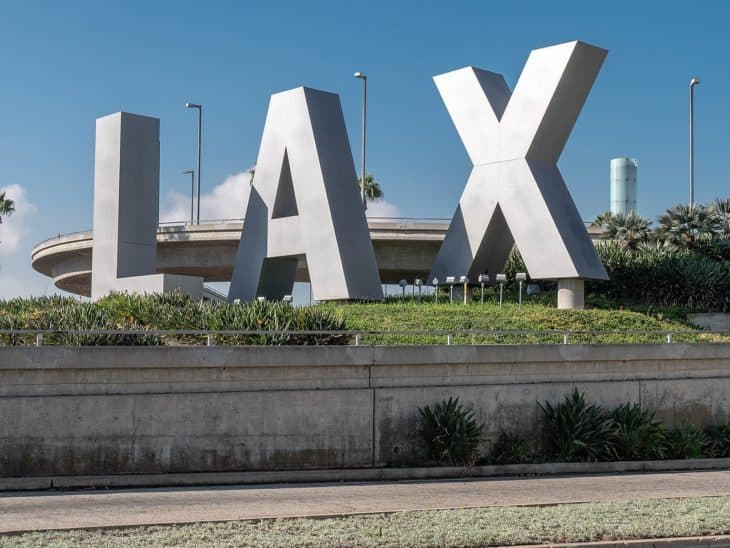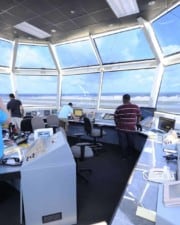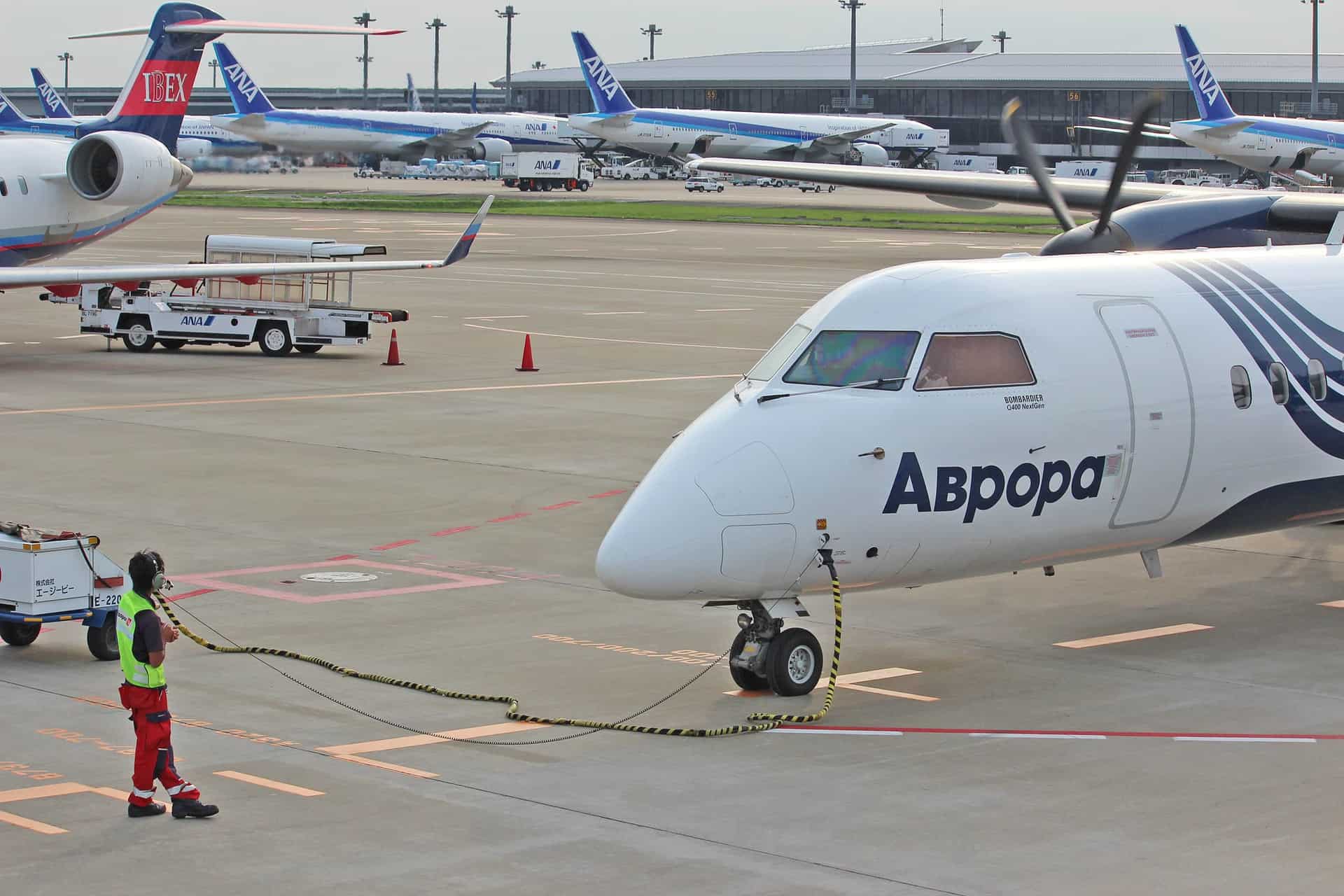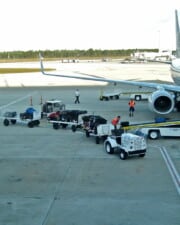Arriving at LAX for an LA holiday? Due to arrive at JFK for a big business trip in the Big Apple? Flying to Heathrow or Charles de Gaulle for “business or pleasure” in Europe? Airports are a big deal. But what are the different types of airports?
Different airports create a different experience for travelers. Some airports, like Portland International Airport, have won awards for their positive passenger experience. Others, like Gatwick Airport, have gained infamy for frustrating travelers.
But however a particular airport may come off to you, not all airports are created equal, and not just in the way they serve passengers. While the interior of many airports may seem the same to you, the fact of the matter is that their functions are quite different.
While you may not have to deal with this reality firsthand, it nevertheless shouldn’t shock you. After all, there are many different types of planes with many different jobs. Transportation, cargo, domestic flights, international flights, military – whatever the purpose of the flight, there’s an airport specifically designed for it.
All of this makes for a diverse flight experience when using different airports for different reasons.
To that end, let’s take a look at the most common types of airports in the world and what characterizes each of them.
1. Commercial Service Airports (Primary)

Of all the airports on this list, these are the ones with which you are almost certainly most familiar, especially if you’re just a passenger and not involved in aviation yourself. LAX, JFK, Heathrow, Charles de Gaulle – all of these are prime examples of commercial service airports.
Their international flavor also hints at one of the primary distinguishing features of this type of airport. If you have been on a long cross-country flight or have crossed the Atlantic or Pacific for an international flight, chances are you did so at an international airport such as these.
Commercial service airports tend to be quite busy, with flights coming in from all four corners of the globe on a 24-hour basis. They are also where a lot of transfers and connections flights to other international destinations occur.
2. Commercial Service Airports (Non-Primary)

There is some overlap between different types of airports, and this is one of those cases. While primary airports tend to refer to major airports such as LAX and Heathrow, they also include airports which do not offer commercial service to the public.
One of the biggest distinguishing features between these is their size. While primary commercial service airports handle 10,000 or more passengers a year, non-primary commercial airports tend to be much smaller in their size and scope of service.
Non-primary commercial airports are thus defined by the FAA as airports which handle at least 2,500 passengers a year but less than 10,000. This is obviously a narrow definition, but these airports can help serve smaller places without primary commercial airport support.
3. Cargo Service Airports

Once again, the clue is in the name. These types of airports specialize in handling cargo planes, shipping and delivery flights. In order to be classified as a cargo service airport, the airport in question must have 100 million pounds of “landed weight” there, according to the FAA.
Landed weight is defined by the FAA as the weight of a plane which is transporting “only cargo in intrastate, interstate, and foreign air transportation.” Once again, we see overlap, as airports can be commercial as well as cargo airports.
This is certainly the case for some of the busiest airports in the US. Indeed, the fact that they are both shuttling out more than 10,000 passengers a year and taking in more than 100 million tons of cargo makes them continuous international hubs of activity.
4. Reliever Airports
The overlap between different types of airports is once more present here, with reliever airports being a specific subset of cargo airports. Once more, the name gives a clue as to its role, as reliever airports are used to “relieve” the traffic at some of the busiest cargo airports.
Beyond that basic definition, however, unlike some of the other airports on this list, reliever airports don’t always have the most defined roles. They simply take flights which would otherwise go to far busier airports.
One important thing to note about reliever airports is that unlike other airports, they can be either publicly or privately owned. As such, private owners can benefit from diverting flights from larger, public airports to their own.
5. General Aviation Airports
This is another case of overlap existing within the airport industry in a big way. General aviation airports are less a unified whole and more a collection of smaller types of airports. All of those have their own section below, so here we’re giving a broad overview of the category.
On the whole, general aviation airports are public airports which do not have more than 2,500 passengers per year or else do not have regularly scheduled service. This often makes them niche airports with similarly narrow purposes.
Nevertheless, the FAA published a report calling these “a national asset,” due in large part to the services they offer. Some of the niche services offered by general aviation airports include granting access to remote areas, providing takeoff space for private flights, and servicing tourist destinations.
6. National Airports
The first of the four types of general aviation airports, national airports are tasked with providing communities which might not otherwise have aviation support with a means by which to access both national as well as international markets.
In an era where the world is becoming more interconnected every year, this type of service is invaluable. No matter your interests or industry, chances are they are tied back into the global economy and community, and you should have the opportunity to join in as well.
This can be especially useful in areas which are too small to be serviced by large airports. This can also be highly beneficial for islands and other places which are too remote to be serviced by a primary commercial airport.
7. Regional Airports
This is the second type of general aviation airports. Whereas national airports are concerned with facilitating trade and traffic across national and international boundaries, regional airports tend to handle interstate trade.
This can be important for a couple of reasons. First, as indicated by the existence of reliever airports, a lot of traffic can pass through commercial airports. Having airports specifically dedicated to regional interstate trade can thus be very beneficial.
In addition, having more choices regarding the airports through which you can ship your products can give those engaging in interstate trade increased freedom. Their smaller size can also be beneficial to those for whom that is a convenience.
8. Local Airports
This is the third in the subset of generation aviation airport types listed here, and it makes our focus even narrower. Whereas national airports handle national and international flights and regional airports handle interstate trade, local airports handle intrastate trade.
This alone should give a hint as to where you might be able to find these types of airports. A state needs to be big enough to require airport service to span its territory. You thus won’t tend to find these in little states like Rhode Island and Mississippi.
For big states like California, Texas, and Alaska, however, local airports can be useful for handling intrastate trade. Doing so also frees up the regional and national airports as well as commercial airports in these states.
9. Basic Airports
The fourth and final of the general aviation airport types listed here, basic airports are another node in the system tasked with connecting everything together. In particular, these types of airports are tasked with linking communities to the national airport system.
In addition, they can be useful for helping to link communities to the type of service provided by general aviation activities. Not all of these services are featured in large commercial airports. As such, basic airports serve as connection points between niche and commercial airport services.
Some of the most important services offered in these types of airports include servicing aircraft flown by emergency services, offering chartered flights for important passengers, handling certain cargo flights, and providing a space for flight training schools and personal flights.
This helps make basic airports the small yet essential “jack of all trades” of the airport system.
10. Unclassified Airports
Finally, we conclude with a category which is intentionally vague. The FAA itself lists these airports as unclassified without much in the way of defining features to them, in large part because this category is really a grab bag.
The only unifying feature of this category of airports is that they offer “access to the aviation system.” Then again, can you imagine an airport that isn’t able to do that? If it’s technically a US airport and doesn’t fit in any of the above categories, it winds up here.
That said, the chances of that happening obviously aren’t too high. Nearly all airports are covered by the descriptions listed above. As such, these unclassified airports mainly exist as technicalities and exceptions to the definitions in place.
Related Posts











